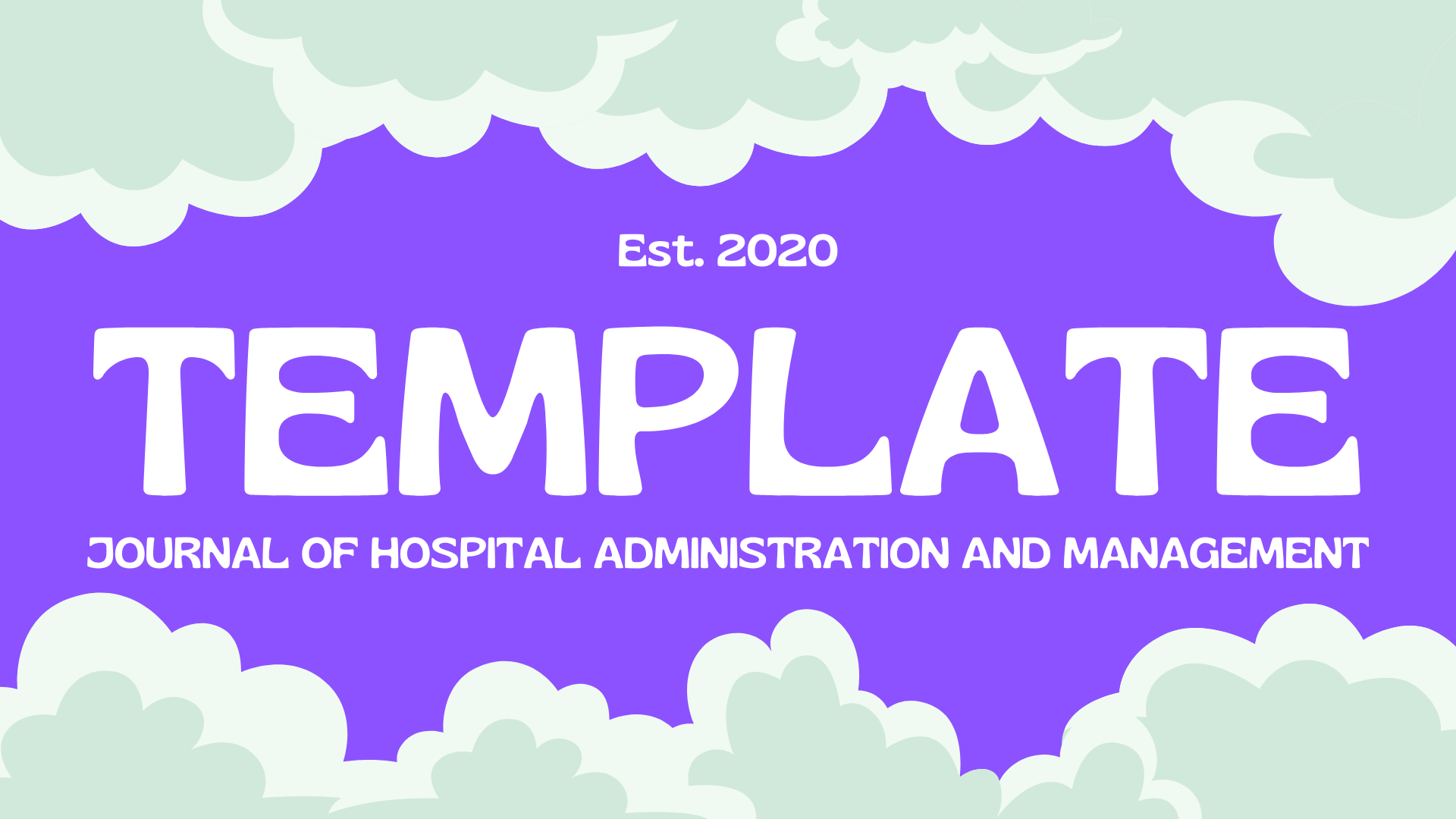AKREDITASI
Pedoman Penulis
Kerangka Artikel
Kerangka Artikel terdiri dari :
Judul,
Abstrak,
1. Pendahuluan,
2. Metode,
3. Hasil dan Pembahasan,
4. Kesimpulan,
5. Saran
Ucapan Terima Kasih
Daftar Pustaka
Jumlah halaman pada artikel pada jurnal ini 5 - 12 halaman. Setiap artikel yang dimuat dalam Journal of Hospital Administration and Management (JHAM) harus menyesuaikan dengan aturan baku sesuai di panduan ini yang mengacu pada jurnal yang diterbitkan oleh Elsevier (www.sciencedirect.com). Untuk template penulisan jurnal bisa didownload di website.
Judul Penelitian
Judul harus ringkas dan informatif, menggambarkan hasil penelitian dan variabel-variabel, serta hubungan antara variabel tersebut bisa dilihat dalam judul tersebut. Judul artikel hendaknya paling banyak 12 kata.
Abstract
Abstract ditulis dalam bahasa Inggris, berisi uraian singkat pentingnya penelitian, tujuan penelitian, metodologi, hasil utama dan kesimpulan. Abstrak berisi ringkasan artikel dan berisi ide-ide pokok yang membuat pembaca tertarik dan berminat untuk membacanya (eye catching). Dibawah paragraf abstrak dicantumkan Keywords (kata kunci) maksimal 6 kata kunci. Kata kunci yang ditulis haraus khusus dan yang sering dipakai dalam artikel. Kata kunci akan digunakan untuk keperluan pengindeksan.
Pendahuluan
Bagian ini berisi latar belakang, alasan penelitian, rumusan masalah, pernyataan tujuan, dan organisasi penulisan serta beberapa teori yang relevan. Adapun penulisannya tidak memakai sub judul (sub-heading).
Metode
Bagian ini memuat langkah-langkah peneliti dalam melakukan penelitian, disajikan secara lengkap namun padat. Kalau melakukan pendataan harus dijelaskan mulai dari metoda pengambilan sampel sampai dengan teknik analisis.
Hasil dan Pembahasan
Hasil dan pembahasan diungkapkan dengan padat dan jelas kerangka keilmuan yang diperoleh, bukan merupakan barisan tabel data atau gambar.
Kesimpulan
Bagian ini merupakan penutup artikel. Simpulan ditulis tanpa nomor, dan disajikan dalam bentuk paragraf. Implikasi dan keterbatasan penelitian juga disajikan dalam bentuk paragraf.
Ucapan Terima Kasih
Sekiranya diperlukan, dapat dituliskan ucapan terima kasih yang merupakan bentuk apresiasi adanya kontribusi dari perorangan maupun lembaga yang tidak bisa masuk sebagai penulis. Misalnya pemberi dana penelitian yang terkait dengan publikasi ini.
Daftar Pustaka
Semua kutipan dan rujukan yang digunakan oleh penulis harus disajikan dalam bagian ini secara konsisten dengan tulisan, gambar atau tabel yang dikutip. Daftar Pustaka ditulis secara berurutan menurut abjad sesuai huruf pertama nama penulis. Para penulis yang dirujuk sesuai pada daftar pustaka yang diberikan. Contoh penulisan diberikan pada Pedoman Penulisan untuk JHAM.
Format Penulisan Pustaka
Artikel jurnal: (Cambria, 12, Spasi 1.15)
Anderson,S.D., 1992. Project quality and project managers. International Journal of Project Management 10 (3), 138–144.
Benner, M.J., Tushman, M.L., 2003. Exploitation, exploration, and process management: the productivity dilemma revisited.AcademyofManagementReview 28 (2), 238–256.
Buku :
Christensen, C.M., 1998. The Innovator’s Dilemma: When New Technologies Cause Great Firms to Fail.HarvardBusinessSchoolPress,Boston,MA.
Deming, W.E., 1986. Out of Crisis.MITCenterfor Advanced Engineering Study,Cambridge,MA.
Buku Kompilasi (edited book)
Duncan, R.B., 1976. The ambidextrous organization: designing dual structures for innovation. In: Kilmann, R.H., Pondy, L.R., Slevin, D. (Eds.), The Management of Organization, vol. 1.North-Holland,New York, NY, 167–188.
Prosiding seminar:
Clare, L., Pottie, G., Agre, J., 1999. Self-organizing distributed sensor networks, Proceedings SPIE Conference Unattended Ground Sensor Technologies and Applications, vol. 3713,Orlando,April 8, 229–237.
Skripsi/tesis/disertasi:
Heinzelman, W., 2000. Application-specific protocol architectures for wireless networks, Ph.D. dissertation, Massachusetts Institute of Technology,Cambridge.
Internet:
Honeycutt, H., 2011. Communication and Design Course, 1998. Website: http://dcr.rpi.edu/commdesign/class1.html, diakses tanggal 3 Maret.
DOWNLOAD TEMPLATE ARTIKEL













